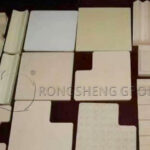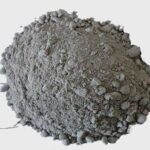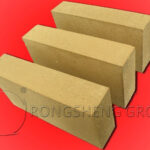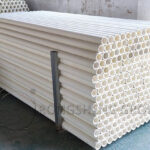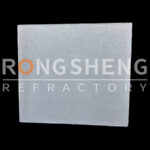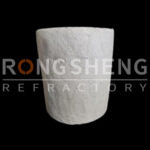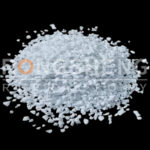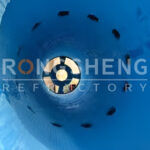Cement Kiln Bricks Description
Rotary cement kiln refractory bricks’ quality and construction technique and working environment can directly influence efficiency and clinker output of cement kiln. So factors which will affect the service life of refractory bricks should be researched to prolong the service life of cement kiln refractory bricks.
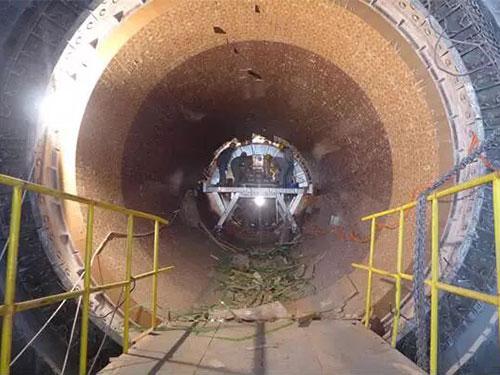
There are mainly 3 factors which can influence the service life of refractory bricks. First, the quality and configuration of refractory bricks, second, the production craft, third, storage condition and construction craft.
Construction technique factors
Lock Iron Stress Squeezing
During locking bricks, lock iron quantity too much or too tight, will cause brick ditch at locking place, so the distance between locking irons should be as scattered as possible, locking iron should be no more than 3pcs at the same place, the tightness of inner end and outer end should be consistent, locking iron should be as far away from thin locking bricks as possible.
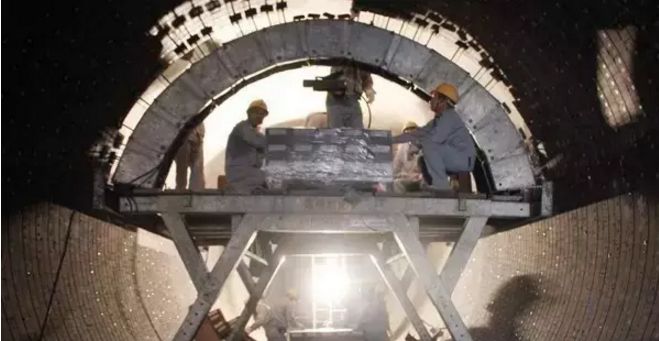
Inlet End Ring Squeezes Fire Bricks
Blocking bricks at inlet end ring will rupture or crack due to squeezing, so single inlet end ring should be changed to dual inlet end rings, and integral bricks should be piled to avoid processing special shaped bricks.
Thermal Damage
Over heat phenomenon
Local temperature in the kiln will be over heat and cause refractory bricks melting and form craters. To avoid this situation, combustor should be correctly adjusted and appropriate refractory materials should be chose for different parts.
Thermal shock phenomenon
Because of frequent open and cease of kiln, drastic temperature change will generate thermal stress and cause bricks spalling and cracking. So stable production operation and reasonable kiln heating and cooling measures should be ensured.
Chemical corrosion damage
Chemical corrosion damage includes alkali corrosion, chrome corrosion and hydration.
Gaseous alkaline salt will permeate into the gaps of fire bricks, condenses and solidifies, which will form horizontal permeation layer of alkaline slats. So alkaline salt content should be controlled during production.
Under the corrosion of alkaline salts, chromite can react with dissociative (K,Na)2O and produces K2(Na2Cr6), basic chromate contains Cr6+ can not only cause damage to fire bricks, but also contaminates environment and threatens human health. So, magnesia chrome bricks should be abandoned and replaced by magnesia alumina spinel bricks, magnesia iron spinel bricks, dolomite bricks and so on.
MgO will react with water and produces Mg(OH)2, the volume of fire bricks will expand and destroy the integral structure of refractory bricks. Thus, during storage, transportation and masonry of MgO and CaO containing fire bricks, moisture, water and rain should be separated.
Rongsheng Kiln Refractory Main Advantages
Quality Assurance
We strictly abide by the quality standards for every order, all the refractory products we offered can meet or even surpass customers’ requirement. We attach importance to every detail during communication to make sure we fully understand the technical performance and application condition, and provide the best solution.
Cost Effectiveness
We firmly believe that things can not only be done, they can be better done. From raw material selection to production and transportation, our professional technical members and business members do the best to minimize the cost and produce the best cost effective products.
Timely Delivery & Reliability
We understand on time delivery is critical for our customers, so we work hard and make reasonable plan and contingency plan to promise the timely delivery and reliability. We have also established a comprehensive Quality Management System for continuous improvement.
